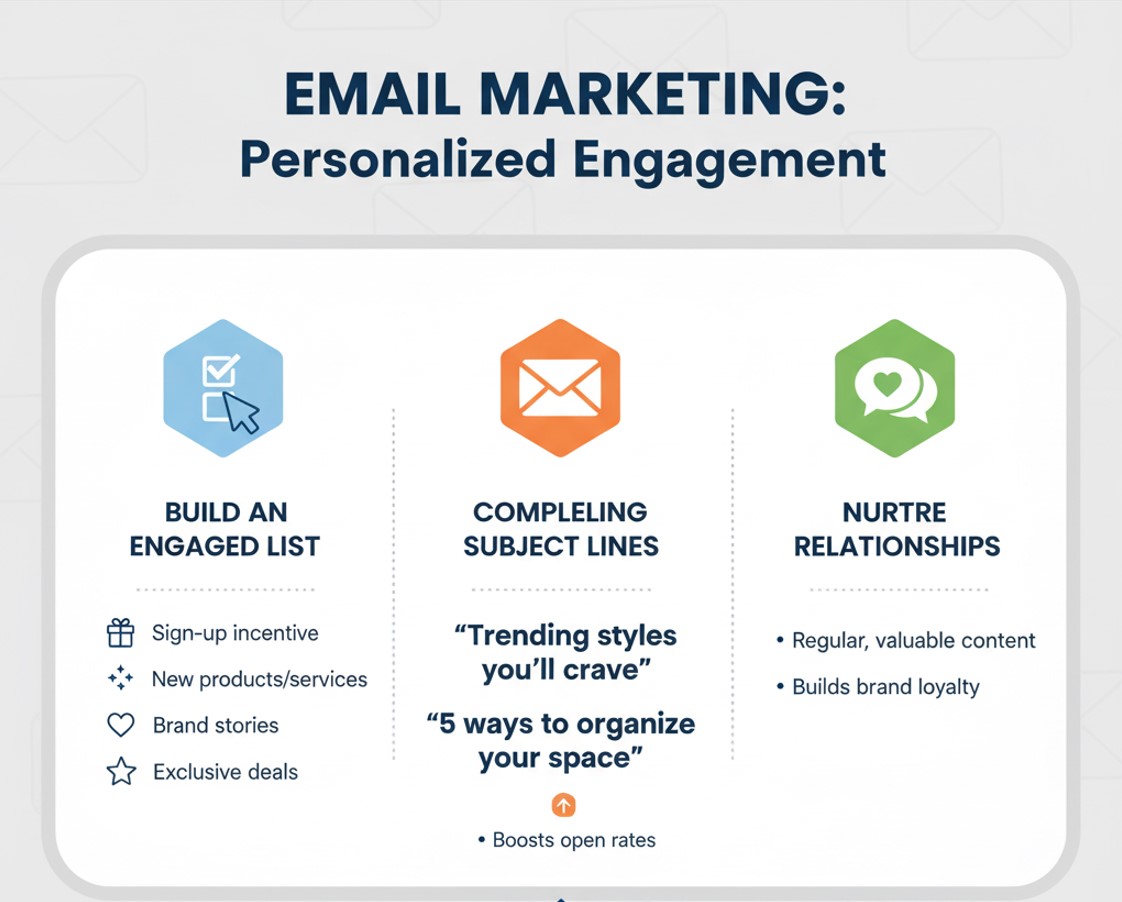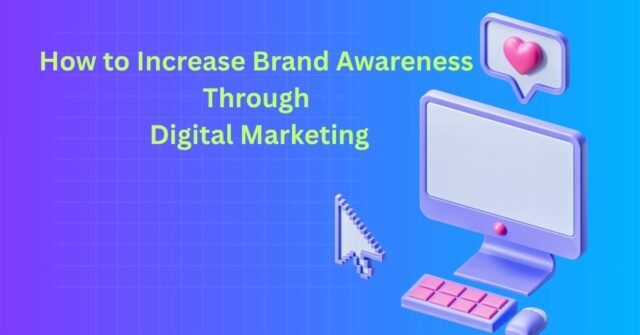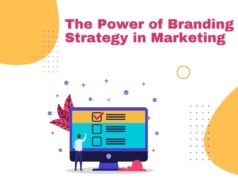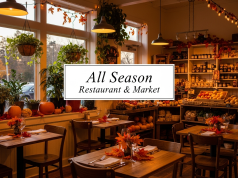Brand recognition is the single most important aim for any business wishing to gain and remain competitive in the market today. Fortunately, digital marketing comes with a myriad of creative and budget-friendly opportunities for getting your brand in front of the right people. But, there are so many channels and strategies to choose from, so where do you start?
This guide dismantles actionable strategies that guarantee your brand takes flight by leveraging tested and proven online marketing strategies. Whether you are just beginning or are in need of an overhaul, you will learn helpful tricks to help get your brand seen more than ever.
What is Brand Awareness?
Before we dive into tactics, it’s important to wrap our heads around what “brand awareness” actually is. Put another way, brand awareness is how easily your target audience can recall your brand name, and how extensively they can picture either your product or service. It’s also not just about your name recognition but also your brand being top of mind when a customer is deciding to make a purchase.
“It is not easy to build brand recognition or brand awareness just by making some clever ads or having a flashy graphic. It’s about making an emotional connection and lasting impression on your audience.
When properly implemented, brand awareness can:
- Build trust and credibility.
- Drive customer loyalty.
- Increase your market share.
- Give you a competitive edge.
Now that we know the fundamentals, let’s focus on how digital marketing can assist you in building and expanding your brand awareness.
Leverage Social Media to Create Contacts
Choose the Right Platforms
Not all platforms are a perfect fit for your brand’s objectives. Find out where your audience is hanging out. For instance:
- Leverage Instagram and TikTok to target younger demographics with visually striking videos and photos.
- If you’re a B2B shop trying to get seen by industry peers, than LinkedIn is the place for you.
- Facebook is great for building community and targeted local campaigns.
Create Engaging Content
Content that is naturally interesting is crucial when it comes to increasing exposure. Some ideas include:
- Share behind-the-scenes videos or stories of your company.
- Put up user-generated content to prove real people using your product.
- Host polls, Q&As, or giveaways to stimulate audience participation.
Pay for Social Media Promotions
Social media organic reach is fickle AF. You can also use paid ad campaigns to target particular demographics, locations, and interests to make sure your brand is getting in front of the right people.
Pro tip: Test out other ad formats like in-feed ads, carousel posts or reels to keep your campaigns fresh.
Simply Nailogical Most Popular Hack No. 1: SEO Your Website
Search engines have become the first resort for people to find a solution or learn more about a product so it is important to appear in the first rows (the search engine optimization) when people see the name of a product.
Target Relevant Keywords
I just mean that you should find keywords and phrases that people are typing/searching online. For instance, if you’re selling eco-friendly clothes, then you’d want to target keywords such as “sustainable fashion brands” or “organic cotton T-shirts.”
You can use a tool like Google Keyword Planner, Ahrefs, or SEMrush to find keyword opportunities.
Create High-Quality Content
Your site is not only a store; it’s a source. Blogging can be a great way to generate traffic and also to flaunt your talents. Craft comprehensive guides, how-to pieces, and listicles that answer the questions your audience has.
Example:
If you are a brand in the skincare space, you might write a blog entitled “5 Skincare Mistakes You Are Probably Making and What You Can Do About It” optimized for key search terms like “skincare tips.”
Focus on Local SEO
Local SEO is critical for small businesses with regional ambitions. Ensure you:
- Claim and set up a Google My Business profile.
- Focus on location-targeted keywords such as “best sushi in Seattle.”
- HARVEST RECENT POSITIVE FEEDBACK Gather up new, good praise that establishes credibility.
The more you rank in search results, the more visible your brand is!
Collaborate with Influencers
Influencer marketing is currently one of the most effective ways to promote brand awareness. Collaborating with influencers will also give you exposure to an existing audience and adds credibility.
Choose the Right Influencers
Look for influencers who have the same audience as your ideal customer. Not every time do you need a mega-celebrity star. Micro-influencers (typically 10k–50k followers) usually have better engagement rate along with the type of followers in their niche crop.
Promote Personal Recommendations
We all know that nothing beats a personal testimony.
Don’t try to control the message but rather give influencers room to be themselves and create content that reflects their natural interaction with your brand. And their fans will have greater faith in their voice if it reads as authentic.
Pro tip: Employ affiliate links or discount codes so you can measure the impact of your influencer campaigns.
Leverage the Power of Content Marketing
Content is the soul of every digital marketing strategy. But for brand awareness, it’s really not a matter of how many posts you can cram into a day or month; what matters is quality and consistency.
Develop Shareable Content
Develop content that people love to share with friends and coworkers, like:
- Cool industry stats via infographics.
- Motivational vids with a good story.
- Free eBooks or checklists that add informational value.
Reusing Content on Different Channels
Strengthen your efforts by repurposing blog posts as social media graphics, webinars as short YouTube videos, and long reports as LinkedIn posts.
Consistency cultivates familiarity, so maintain consistency in your visual branding (logos, colour schemes, typefaces) in all channels.
Email Marketing in the Way of Personalized Engagement

Email is one of the oldest digital marketing tricks in the book, and it continues to be one of the most effective when it comes to engaging your audience and keeping your brand at the forefront of your users’ minds.
Build an Engaged Email List
Provide a reason to sign up (such as a discount or free guide) in return for an email signup. Regularly send emails with:
- Announcement of new products or services.
- Brand values or mission stories.
- Subscriber-exclusive deals to reward loyalty.
Be Desirable in Your Subject Lines
Your subject line has a tremendous effect on your email open rate. Present it in an interesting and easy-to-understand yet full of curiosity manner, i.e.:
- “You’ve been craving these trending styles, right?”
- “5 ways to help organize your space.”
Good email messages engage your list and create a relationship with them over time.
Try Pay-Per-Click (PPC) Advertising
Paid ads, such as PPC campaign,s can support your organic campaigns. With platforms such as Google Ads, you can bid on keywords to push your brand to the top of search results.
Opt for Awareness, Not Conversions
Brand awareness campaigns should be treated as exposure, not sales. Use PPC ads to:
- Advertise your blog content or assets.
- Highlight a Welcome Offer for your new customers.
- Focus on your unique selling propositions (USPs), such as your commitment to sustainability or the best prices you could possibly find.
Test your campaigns regularly, and perfect the mechanisms that demonstrate which ads are working for your audience.
Leverage Community and Alliances
Sometimes, raising awareness of a brand doesn’t go alone. Team up with other companies and even work directly with your customers to increase your reach even more.
Build a Community
Facebook groups, LinkedIn communities or even a Discord server for your audience can help you make loyal fans.
Co-Founding with Similar Brands
Cross-promotion with non-competing brands that go further and share audiences. So, for example, a fitness apparel company might team up with a nutrition company and give stuff away.
Participate in Social Causes
Associate your brand with causes that matter to create emotional resonance. And here, transparency and authenticity are critical.
Example:
If you’re a plant-based food company, you might share progress on social media and support sustainability projects.
Takeaway: Your Brand Awareness Building Plan
Brand awareness is not a sprint but a marathon. The digital landscape is full of everything you need to set your brand apart, but your results often come down to how successful you are at testing, measuring, and optimizing your efforts.
From there, build on tactics that fit your audience and your budget. Whether you’re doing your first Instagram campaign or writing your 50th blog post, every bit of effort you put in today will mean more recognition tomorrow.
On the hunt for a more intelligent, simpler way to organize your marketing? Now, take your branding strategy to the next level and get creating content that the above resonates with your audience.
You can learn more about: Seasonal Marketing Ideas to Transform Your Business Year-Round









